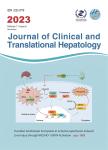Update on Liver Failure Following Hepatic Resection: Strategies for Prediction and Avoidance of Post-operative Liver Insufficiency
Update on Liver Failure Following Hepatic Resection: Strategies for Prediction and Avoidance of Post-operative Liver Insufficiency作者机构:Department of SurgeryDivision of Surgical OncologyUniversity of Wisconsin HospitalMadisonWIUSA Department of SurgeryDivision of Surgical OncologyThe Ohio State University Wexner Medical CenterColumbusOHUSA Department of SurgeryDivision of Surgical OncologyThe Ohio State University Wexner Medical CenterColumbusOH 43210USA
出 版 物:《Journal of Clinical and Translational Hepatology》 (临床与转化肝病杂志(英文版))
年 卷 期:2018年第6卷第1期
页 面:97-104页
核心收录:
学科分类:1002[医学-临床医学] 100214[医学-肿瘤学] 10[医学]
基 金:NCI NIH HHS [P30 CA016058]
主 题:Complication Hepatectomy Liver failure Liver resection Prevention Risk models
摘 要:Liver resection is increasingly used for a variety of benign and malignant conditions.Despite advances in preoperative selection,surgical technique and perioperative management,posthepatectomy liver failure(PHLF)is still a leading cause of morbidity and mortality following liver resection.Given the devastating physiological consequences of PHLF and the lack of effective treatment options,identifying risk factors and preventative strategies for PHLF is paramount.In the past,a major limitation to conducting high quality research on risk factors and prevention strategies for PHLF has been the absence of a standardized definition.In this article,we describe relevant definitions for PHLF,discuss risk factors and prediction models,and review advances in liver assessment tools and PHLF prevention strategies.



